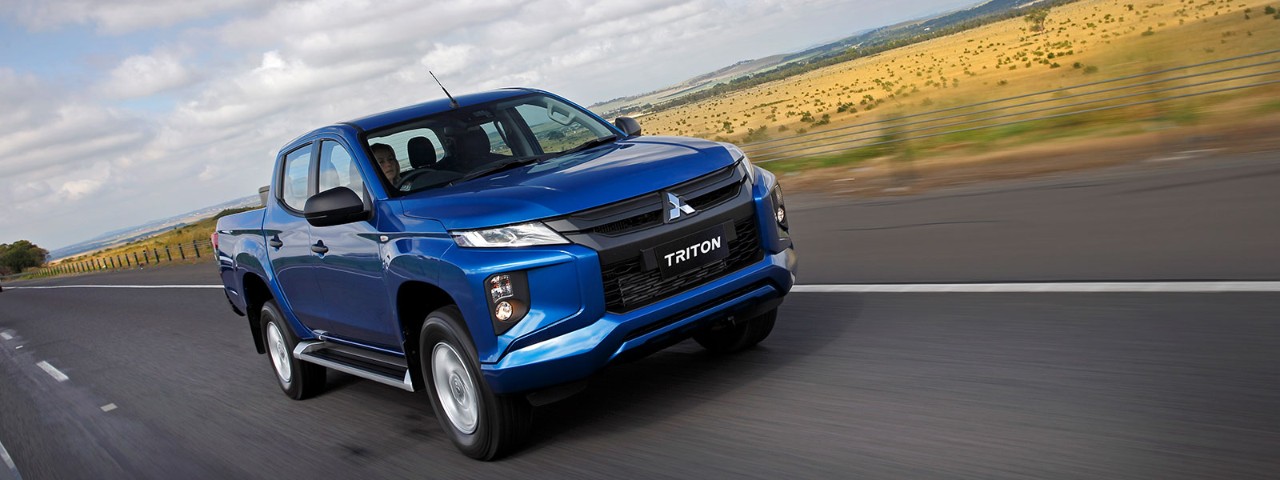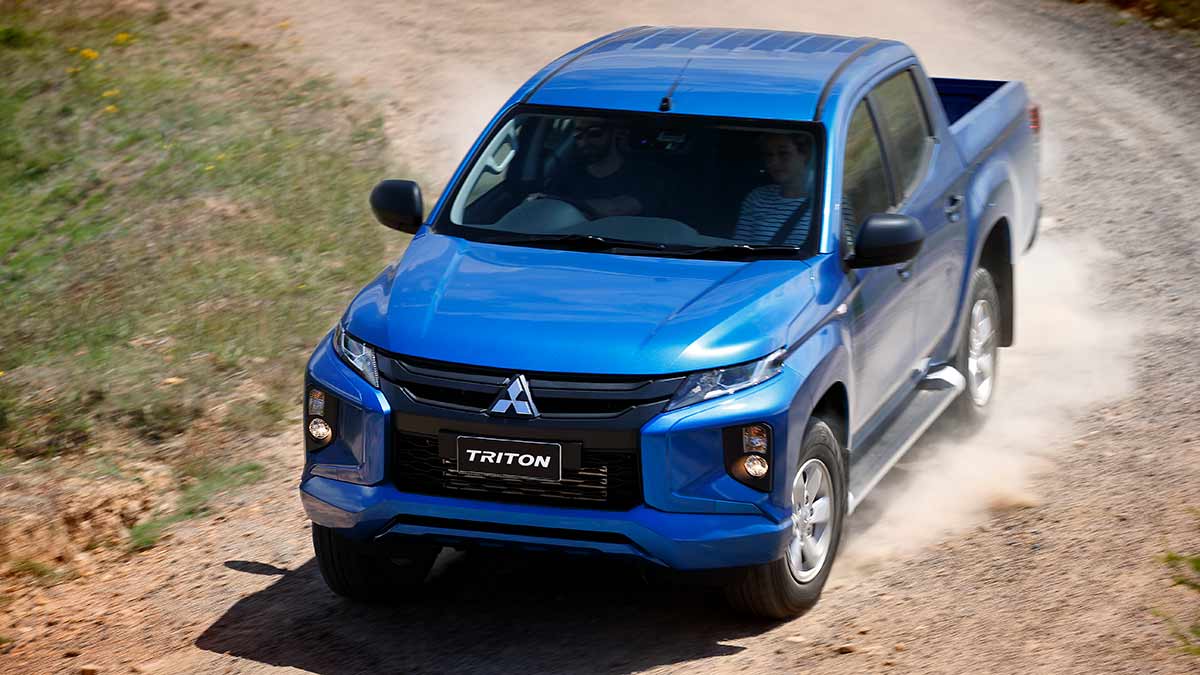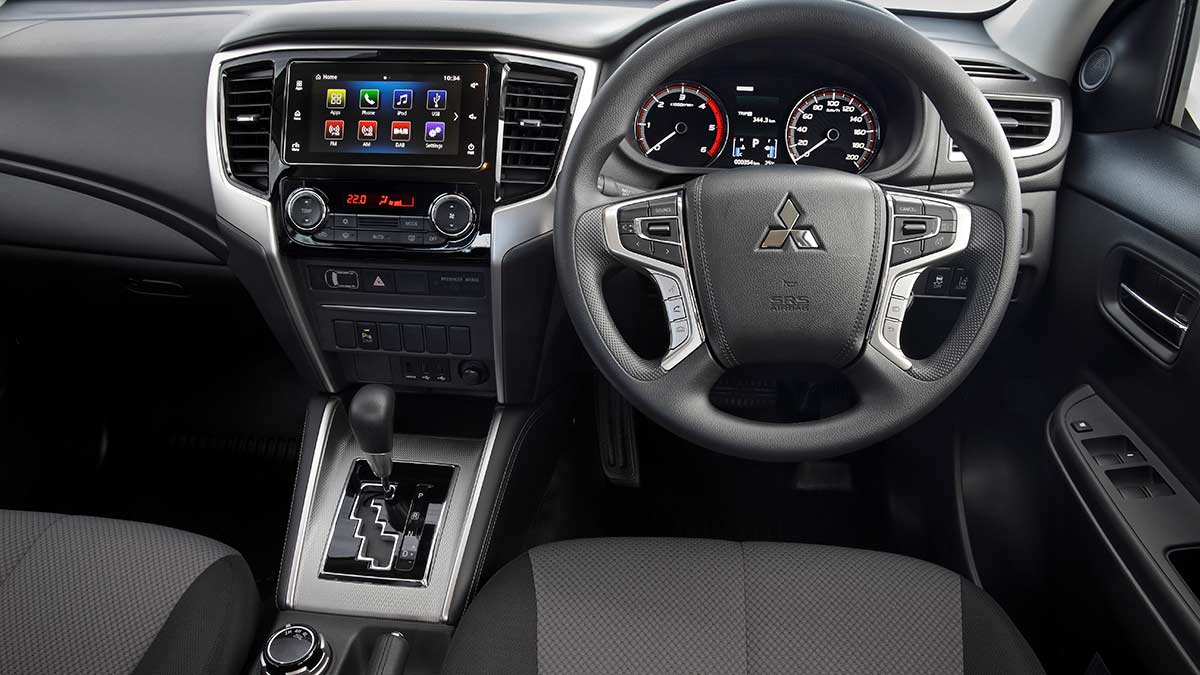The ninth-generation Toyota HiLux has arrived, bringing with it a futuristic forward exterior design, more safety and tech and the same rugged capability owners love. Will the updates tempt private buyers away from the Ford Ranger or are they just enough to keep fleets onside?
Road Test: 2019 Mitsubishi Triton

Tim Nicholson takes the updated Mitsubishi Triton GLX+ for a spin.
SUVs have overtaken passenger sedans and wagons as the family car of choice in Australia. But four-wheel-drive dual-cab pick-ups are another popular family pick. The two top-selling vehicles in Australia last year were the Toyota HiLux and the Ford Ranger. The third-best-selling pick-up was the Mitsubishi Triton.
This year marks the 40th anniversary of Mitsubishi’s pick-up series and to celebrate, the Japanese car-maker overhauled its most popular model. Based on the fifth-generation model that landed in Australia in April 2015, the heavily revised Triton gains a bold new exterior design that brings it into line with Mitsubishi’s ‘Dynamic Shield’ design philosophy.
Thumbs up
Bold new design is unique in the segment and unrivalled value for money.
Thumbs down
Smaller than some rivals, on-road performance keeps it in the middle of the pack.

The bonnet sits noticeably higher than the outgoing Triton and the headlights are also higher set. The front-end styling won’t suit everyone, but there’s no denying it’s dramatic.
Inside, the changes are less obvious, extending to a new multifunction steering wheel, higher-quality materials for some dash and door panels, and more stitching.
The Triton is available in single, club and double-cab body styles. The base 4x2 single-cab chassis continues to be the sole variant offered with the 94kW/194Nm 2.4-litre petrol engine.
All other variants employ Mitsubishi’s revised 133kW/430Nm 2.4-litre MIVEC turbo-diesel engine, matched with either a six-speed manual or new six-speed auto transmission. While the single cab is available in 4x2 and 4x4, the club and double cabs are all 4x4 only. Spec grades start with the GLX, moving up to GLX with ADAS safety pack, GLX+, GLS and GLS Premium.
The GLX+ tested here went up by $1500 at the start of the year to $42,490 in auto guise. Despite the price rise, the Triton remains one of the best-value pick-ups on the market. It’s priced below all its major rivals – which also includes the likes of the Mazda BT-50, Nissan Navara, Isuzu D-Max and Volkswagen Amarok – and it has an extensive standard specification list.
The look, feel and quality of the Triton’s cabin bests some competitors, although it can’t match the benchmark-setting Amarok. It has a clean design with logically placed switches, and the 7.0-inch touchscreen in the GLX+ is responsive and easy to navigate.

The inclusion of reach as well as height adjustment for the steering wheel is welcome. Seats are comfortable in the second row, but there’s minimal knee room for adults. Shoulder room is just okay.
The 2.4-litre turbo diesel was brand new in 2015. Outputs of 133kW of power and 430Nm of torque are about average for the segment.
It’s an eager, torquey engine and while it still sounds like a diesel, Mitsubishi has improved noise, vibration and harshness measures to keep cabin noise down.
Around town the Triton’s steering can feel heavy, but it never feels like a massive barge in the way some of its rivals do. Its turning circle of 11.8 metres is one of the segment’s best.
Acceleration is brisk without troubling the VW Amarok V6, and the ride quality is ultra comfortable.
We switched the dial to 4H on the Super Select 4WD-II system when we found some unsealed roads and logging tracks near Woodend as part of our test, and the Triton proved to be more than capable at light off-roading.
The Triton has a competitive 951-kilogram payload, but its 3100-kilogram towing capacity is 400 kilograms off the Ford Ranger and Holden Colorado.
Mitsubishi claims fuel consumption of 8.6L/100km. We recorded 10.9L/100km after a week, and our country drive saw about 9.0L/100km.
The Triton’s new dramatic look has lifted an already solid offering. The changes have ensured that it retains its crown as the best-value one-tonne ute on the market.
The verdict
Always an underrated offering, the Triton is a true multi-purpose vehicle and is now better value than ever.
|
Price |
Price as tested: $42,490 plus on-road costs Model range: $22,490 to $51,990 |
|---|---|
|
Drivetrain |
2.4-litre four-cylinder turbo-diesel, all-wheel drive and six-speed automatic Power: 133kW@3500rpm Torque: 430Nm@2500rpm Wheels: 245/70R16 111S RF |
|
Fuel |
Fuel: Diesel, 75-litre tank Consumption: 10.9L/100km (RACV test), 8.6L/100km (government test) Emissions: 225g/km CO2 |
|
Standard safety |
Forward collision mitigation system, lane-departure warning, emergency brake assist, speed limiter, reversing camera, emergency stop signal and seven airbags. |
|
Standard features |
Seven-inch touchscreen, Apple CarPlay and Android Auto, keyless entry, climate control, reach and height-adjustable steering wheel, privacy glass and cloth seats. |
|
Warranty/services |
Five-year/unlimited kilometre warranty, capped-price servicing every 12 months or 15,000 kilometres. |


